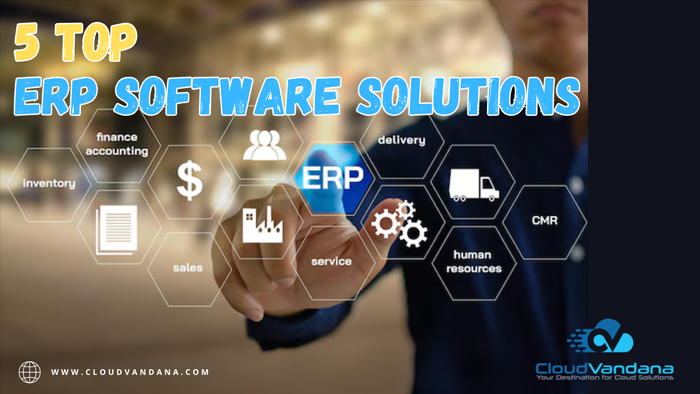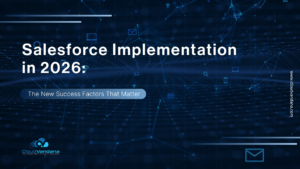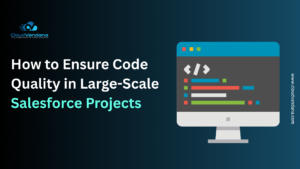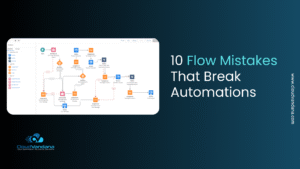Discover the top ERP software solutions for small and medium-sized enterprises (SMEs). Learn how these systems can streamline business operations, improve efficiency, and drive growth. Find the perfect ERP solution for your SME today.
Table of Contents
Introduction
In today’s fast-paced business environment, small and medium-sized enterprises (SMEs) face numerous challenges that can hinder their growth and operational efficiency. From managing complex supply chains to ensuring accurate financial reporting and maintaining customer relationships, SMEs often struggle with fragmented systems and manual processes that lead to inefficiencies, errors, and missed opportunities.
One of the most effective ways to address these pain points is by implementing an Enterprise Resource Planning (ERP) system. ERP software integrates various business processes into a unified system, providing real-time visibility and control over critical business functions. This blog post will explore the top five ERP software solutions for SMEs, highlighting their features, benefits, and how they can help your business overcome operational challenges.
Pain Points of SMEs
1. Fragmented Systems
Many SMEs rely on separate software applications for different business functions, such as accounting, inventory management, and customer relationship management (CRM). This fragmentation can lead to data silos, inconsistent information, and time-consuming manual processes.
2. Inefficiency and Errors
Manual data entry and the lack of integration between systems can result in errors, duplicated efforts, and inefficiencies. These issues can slow operations, reduce productivity, and negatively impact customer satisfaction.
3. Lack of Real-Time Insights
Gaining real-time insights into business performance can be challenging without a centralized system. Decision-makers may struggle to access accurate and up-to-date information, hindering their ability to make informed decisions quickly.
4. Compliance and Reporting Challenges
Ensuring compliance with industry regulations and generating accurate financial reports can be daunting for SMEs. Inconsistent data and manual processes can increase the risk of non-compliance and errors in reporting.
5. Scalability Issues
As SMEs grow, their existing systems may struggle to meet increasing demands. Scaling operations can become difficult without a flexible and scalable ERP solution that can adapt to changing business needs.
Top 5 ERP Software Solutions for SMEs
1. SAP Business One
Overview: SAP Business One is a comprehensive ERP solution for SMEs. It offers various functionalities, including financial management, sales and customer management, inventory control, and business intelligence.
Key Features:
- Integrated financial management
- CRM and sales management
- Inventory and production management
- Real-time analytics and reporting
- Customizable dashboards and reports
Benefits: SAP Business One provides SMEs a unified platform that enhances visibility and control over their operations. Its real-time analytics and reporting capabilities enable businesses to make data-driven decisions quickly. Additionally, the solution’s scalability ensures it can grow alongside your business.
2. Microsoft Dynamics 365 Business Central
Overview: Microsoft Dynamics 365 Business Central is a cloud-based ERP solution offering a comprehensive business application suite. It is designed to streamline and automate business processes, making it ideal for SMEs looking to improve efficiency and productivity.
Key Features:
- Financial management and accounting
- Supply chain and inventory management
- Project management and job costing
- CRM and sales automation
- Integration with Microsoft Office 365 and other Microsoft products
Benefits: Business Central’s integration with other Microsoft products provides a seamless user experience and enhances productivity. The solution’s robust features help SMEs manage their finances, operations, and customer relationships more effectively. Its cloud-based nature ensures accessibility and scalability.
3. NetSuite ERP
Overview: NetSuite ERP is a cloud-based solution that offers various functionalities, including financial management, inventory control, order management, and human resources. It is designed to help SMEs streamline their operations and achieve greater efficiency.
Key Features:
- Financial planning and budgeting
- Order and inventory management
- CRM and customer service management
- Human resources and payroll
- Real-time dashboards and reporting
Benefits: NetSuite ERP provides SMEs with a unified platform integrating various business processes, reducing the need for disparate systems. Its real-time dashboards and reporting capabilities offer valuable insights into business performance, enabling informed decision-making. The cloud-based solution also supports scalability and remote access.
4. Odoo
Overview: Odoo is an open-source ERP solution offering a modular approach, allowing SMEs to customize the system according to their needs. It covers various business functions, including sales, accounting, inventory, and project management.
Key Features:
- Modular design with customizable modules
- Accounting and financial management
- Sales and CRM
- Inventory and warehouse management
- Project management and human resources
Benefits: Odoo’s modular design allows SMEs to choose and integrate only the needed functionalities, making it a cost-effective solution. Its open-source nature ensures flexibility and customization, allowing businesses to tailor the system to their unique requirements. Its user-friendly interface and robust features enhance operational efficiency.
5. Acumatica
Overview: Acumatica is a cloud-based ERP solution designed for SMEs. It offers a comprehensive suite of applications, including financial management, distribution, project accounting, and CRM. Acumatica is known for its user-friendly interface and flexibility.
Key Features:
- Financial management and accounting
- Distribution and supply chain management
- Project accounting and management
- CRM and customer support
- Mobile access and real-time analytics
Benefits: Acumatica’s cloud-based nature ensures accessibility from anywhere, making it ideal for remote work environments. Its user-friendly interface and real-time analytics provide valuable insights into business performance. The solution’s flexibility allows SMEs to scale and customize the system as needed.
Conclusion
Choosing the right ERP software is crucial for SMEs looking to streamline operations, improve efficiency, and drive growth. The solutions mentioned above offer a range of features and benefits tailored to the needs of small and medium-sized businesses. Whether you prioritize integration, scalability, or customization, there is an ERP solution that can meet your specific requirements.
Investing in an ERP system can help your business overcome the challenges of fragmented systems, inefficiencies, and a lack of real-time insights. You can achieve greater visibility, control, and productivity by centralizing and automating your business processes.
Ready to Transform Your Business?
If you’re ready to take your SME to the next level, it’s time to invest in a powerful ERP solution. Contact CloudVandana today to learn how we can help you find the perfect ERP system for your business needs. Our experts are here to guide you through the selection process and ensure a smooth implementation so you can start reaping the benefits of an integrated and efficient business operation. Book a call for a free demo today and take your business to the next level.
















